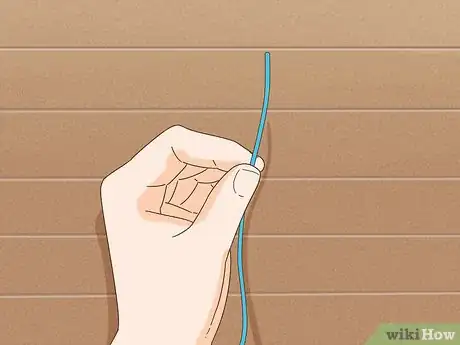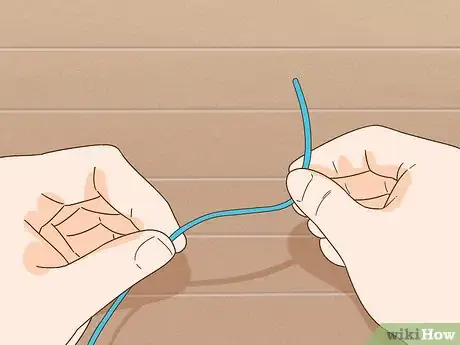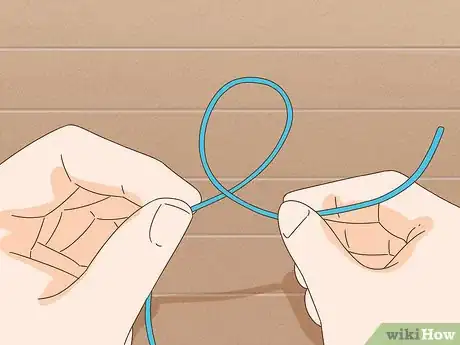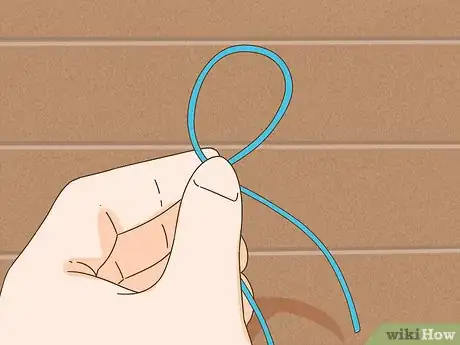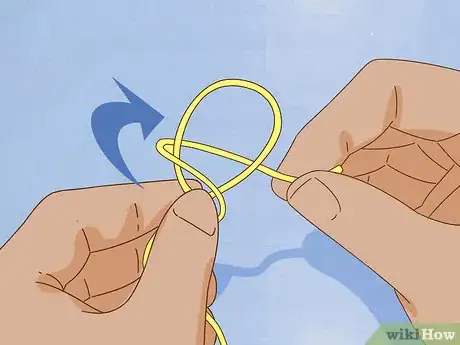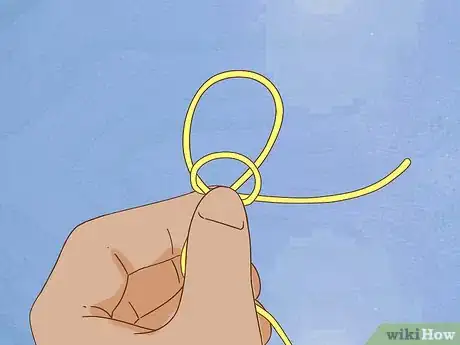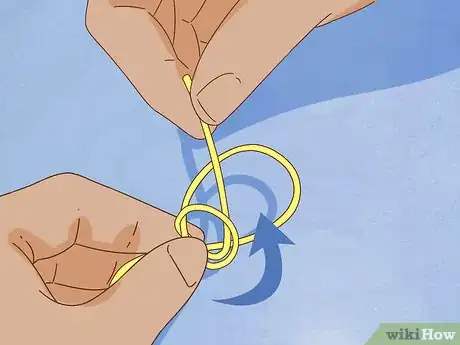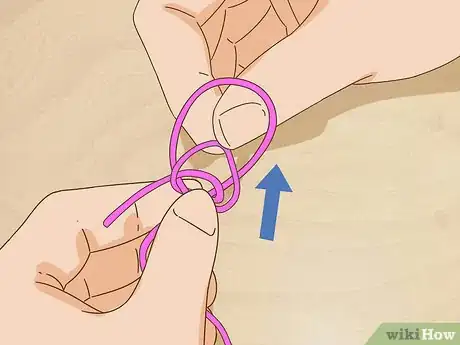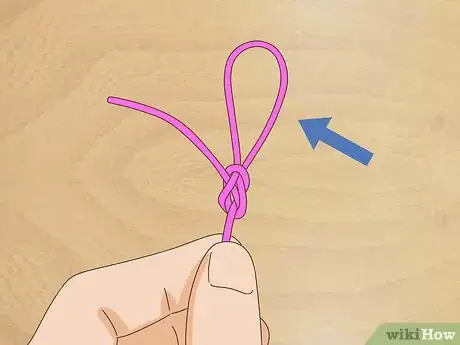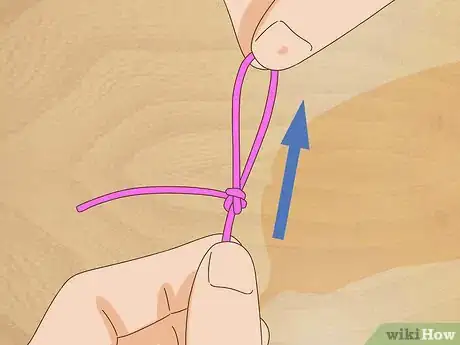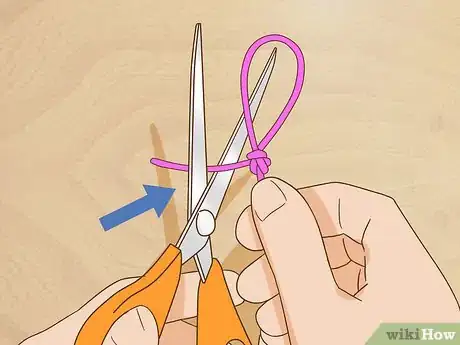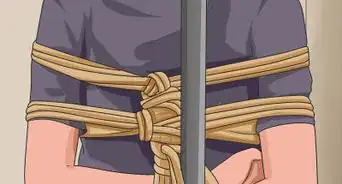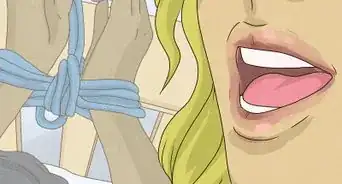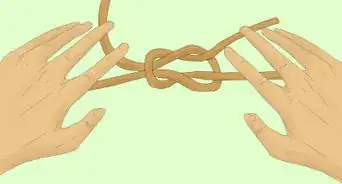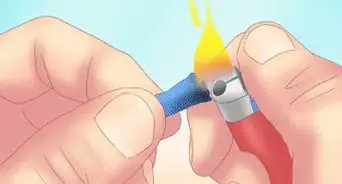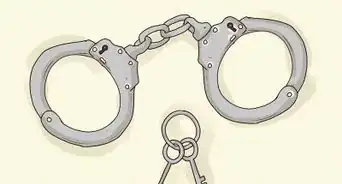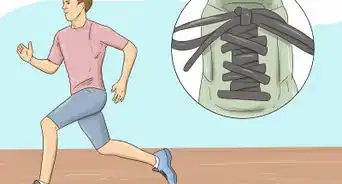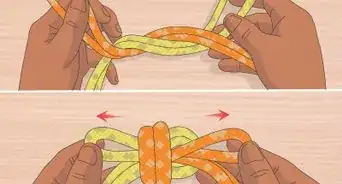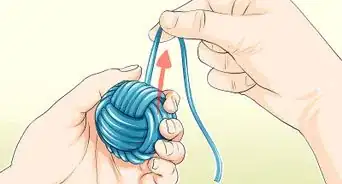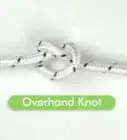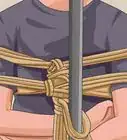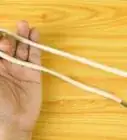This article was co-authored by wikiHow staff writer, Eric McClure. Eric McClure is an editing fellow at wikiHow where he has been editing, researching, and creating content since 2019. A former educator and poet, his work has appeared in Carcinogenic Poetry, Shot Glass Journal, Prairie Margins, and The Rusty Nail. His digital chapbook, The Internet, was also published in TL;DR Magazine. He was the winner of the Paul Carroll award for outstanding achievement in creative writing in 2014, and he was a featured reader at the Poetry Foundation’s Open Door Reading Series in 2015. Eric holds a BA in English from the University of Illinois at Chicago, and an MEd in secondary education from DePaul University.
There are 7 references cited in this article, which can be found at the bottom of the page.
This article has been viewed 27,016 times.
Learn more...
A perfection loop is a type of knot that is known for being hard to untie. It is commonly referred to as an angler’s loop, since it is one of the most frequently used methods for tying a fly-fishing line. It is also one of the few knots that holds well in a bungee cord. You create a perfection loop by layering two smaller loops on top of one another and relying on their tension to form the knot. You can make a perfection loop easily without using any tools.
Steps
Starting Your First Loop
-
1Determine the necessary length needed for your knot. If you’re fishing and plan on attaching a fly line to your perfection loop, you probably only need a few inches.[1] If you’re making a larger knot, you’ll want to start out with a larger piece of rope, twine, or bungee cord depending on what your needs are.[2]
-
2Grab the working end with your right hand and standing part with your left. The working end refers to the end of the material where you’re making the knot, and the standing part refers to the portion of the line that leads up the knot.[3] The area near the end of the rope on your working end is called a tag end.[4]
- You cannot put a perfection loop in the middle of a rope or fishing line. This means that you have to start on the working end of whatever your material is.
Advertisement -
3Start your first loop by curling the working end underneath the standing part. Take the tag end of your working end and curl it into a small circle by wrapping it perpendicularly around the left side of the standing part. Make sure that the tag end is now underneath the standing part. The open space inside of your loop shouldn't be more than a few inches, but it should be big enough that you could fit another loop of the same size through it.[5]
- A loop where the standing part is on top of the working end is called an underhand loop.[6]
- If your loop looks like an upside-down teardrop, you’ve done it correctly!
-
4Pinch the junction where the working end and standing part meet. Use the thumb and forefinger on your left hand to pinch the junction where the two parts meet. The tag end should be sticking out underneath the standing part.[7]
- You should have enough material left on your working end to repeat this process. If you don’t, start over. You have to make a near-identical loop after making your first one and you don’t want to run out of space.
Adding Your Second Loop
-
1Begin your second loop by folding the working end over the standing part. With your first loop done, you’ll want to take the remaining section of the working end and fold it across the same junction where your first loop meets. With the first loop’s junction pinched in your left hand, pull the working end over the junction with your right hand in a circular motion.[8]
- While the working end went underneath the standing part for your first loop, your second loop requires the working end to be on top of the standing part. This is called an overhand loop.[9]
-
2Pinch the second loop in the same spot where you’re holding your first loop. This can be tricky. You need to loosen your grip on the junction where your first loop rests in order to fit your second loop into the same location.[10]
- You should now have two loops pinched between your thumb and forefinger on your left hand.
- While they should be roughly the same size, it’s okay if your second loop is a little smaller than your first loop.
-
3Move the remainder of the working end between the two loops. You should now have at least a little material left on your working end. Pull it in between the two loops by resting it across the junction where the two loops meet so that it’s resting between them.[11]
- Don't worry if you have a lot of material left on your tag end. You're going to cut it off at the end anyway.
Tightening Your Perfection Loop
-
1Pull the second loop through the inside of your first loop. Your second loop should be resting between you and your first loop at this point. Pinch it together and pass it through your first loop so that it is on the other side.[12]
-
2Double-check your second loop to ensure that it is the right size. Before you fully tighten your knot, make sure that the remaining portion of the second loop is the desired length. Perfection loops are notoriously difficult to untie, and you may be stuck with an improperly-sized loop if you don’t check it before tightening it.[13]
-
3Pull the second loop away from the standing part to tighten the knot. While holding the standing part tightly, pull the second loop in the opposite direction. The knot will tighten around the junction where your two loops meet.[14]
- You may need to steady the remaining portion of the working end between your thumb and forefinger while gripping the standing part with the same hand. This will prevent the two loops from shaking free.
-
4Cut the remaining portion of the tag end off. Once tightened, this portion is no longer needed.
References
- ↑ https://youtu.be/spnFKLdl790?t=27
- ↑ https://youtu.be/kYYCBxFi8y0?t=67
- ↑ https://scoutpioneering.com/2013/02/11/knot-tying-terminology/
- ↑ https://www.animatedknots.com/terminology
- ↑ https://scoutpioneering.com/2013/02/11/knot-tying-terminology/
- ↑ https://scoutpioneering.com/2013/02/11/knot-tying-terminology/
- ↑ http://www.101knots.com/perfection-loop.html
- ↑ http://www.101knots.com/perfection-loop.html
- ↑ https://scoutpioneering.com/2013/02/11/knot-tying-terminology/
